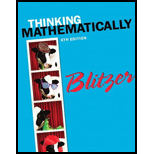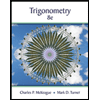
Concept explainers
Conservative commentator Rush Limbaugh directed this passage at liberals and the way they think about crime.
Of course, liberals will argue that these actions [contemporary youth crime] can be laid at the foot of socioeconomic inequities, or poverty. However, the Great Depression caused a level of poverty unknown to exist in America today, and yet I have been unable to find any accounts of crime waves sweeping our large cities. Let the liberals chew on that.
(See, I Told You So, p. 83)
Limbaugh’s passage can be expressed in the form of an argument:
If poverty causes crime, then crime waves would have swept American cities during the Great Crime Depression. Crime waves did not sweep American cities during the Great Depression.
Translate this argument into symbolic form and determine whether it is valid or invalid.
Want to see the full answer?
Check out a sample textbook solution
Chapter 3 Solutions
Thinking Mathematically (6th Edition)
 Trigonometry (MindTap Course List)TrigonometryISBN:9781305652224Author:Charles P. McKeague, Mark D. TurnerPublisher:Cengage Learning
Trigonometry (MindTap Course List)TrigonometryISBN:9781305652224Author:Charles P. McKeague, Mark D. TurnerPublisher:Cengage Learning
